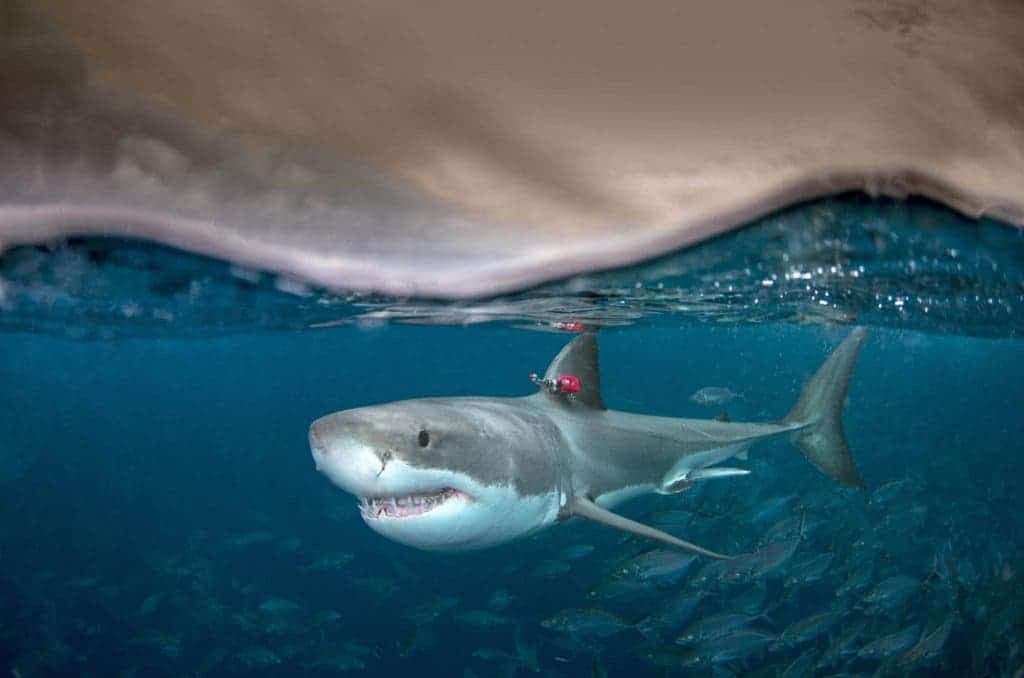Most fishes are ectothermic — or cold-blooded — which means they rely on environmental temperatures for thermoregulation. However, some have developed an evolutionary advantage to regulating their own body temperatures, such as sharks and tunas. This has intrigued scientists for decades, curious about the differences between different types of fish.
Now, a new study by marine biologists offers answers to this big puzzle.

Researchers from Trinity College found that while warm-blooded fish can swim faster, they don’t live in waters spanning a broader range of temperatures. This means they are just as vulnerable to changing global temperatures as their cold-blooded relatives.
“Scientists have long known that not all fish are cold-blooded. Some have evolved the ability to warm parts of their bodies so that they can stay warmer than the water around them, but it has remained unclear what advantages this ability provided,” Lucy Harding, lead-author of the research article, said in a media statement.
Endothermy (warm-bloodedness) is the ability to conserve metabolically derived heat through vascular countercurrent heat exchangers, and elevate the temperature of specific internal tissues, such as muscle and eyes. It’s a very rare ability, with only about 35 species of marine fishes (less than 0.1% of all known fish species) are known to exhibit it.
Various hypotheses have been raised over the years to explain the ultimate driver of endothermy in fishes. These include that endothermy enables thermal niche expansion, facilitates elevated cruising speeds, allows for more effective perception of thermal gradients, increases metabolic rates and facilitates increased rates of gonadal growth. But this is maybe the first time convincing evidence has been found to support one of these hypotheses.
With a team of researchers, Harding decided to look further at whether warm-blooded fish can swim faster and live in a broader range of temperatures – making them more resilient to the effects of climate change. They collected real-world data from wild sharks and bony fish, as well as using information from existing databases. The researchers attached bio-logging devices to the finds of the animals they caught. This allowed them to gather information such as water temperatures encountered by the fish in their habitats; the speeds at which the fish swam for most of the day; and the depths of water the fish swam in. A total of 16 species were tagged, four endotherms and 12 ectotherms, and the data were compared between the different species.
The results showed that warm-blooded fishes swim approximately 1.6 times faster than their cold-blooded relatives, but they didn’t live in broader temperature ranges. This suggests that they are as sensitive to ocean warming as all other fish in the sea, or perhaps even more so. The findings can now help future conservation efforts for these animals, co-author Nick Payne said in a statement.
“The faster swimming speeds of the warm-blooded fishes likely gives them competitive advantages when it comes to things like predation and migration. With predation in mind, the hunting abilities of the white shark and bluefin tuna help paint a picture of why this ability might offer a competitive advantage,” Payne said.
Climate change has been steadily warming the ocean, which absorbs most of the heat trapped by greenhouse gases in the atmosphere, for over 100 years. This warming is altering marine ecosystems and having a direct impact on fish populations. Many fish are sensitive to temperature and can survive only in specific temperature ranges, which puts them at great risk as oceans become hotter and hotter.
The study was published in the journal Functional Ecology.









